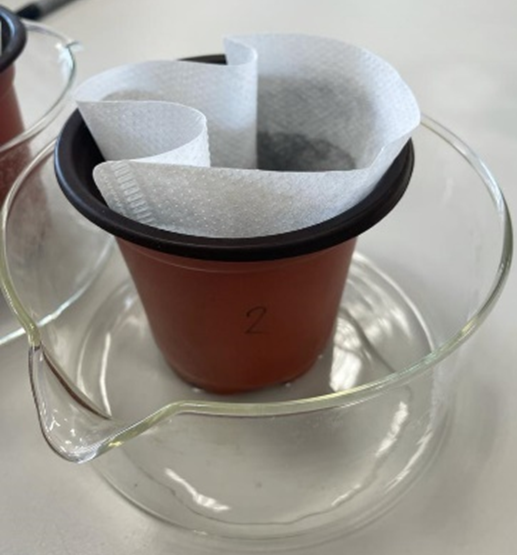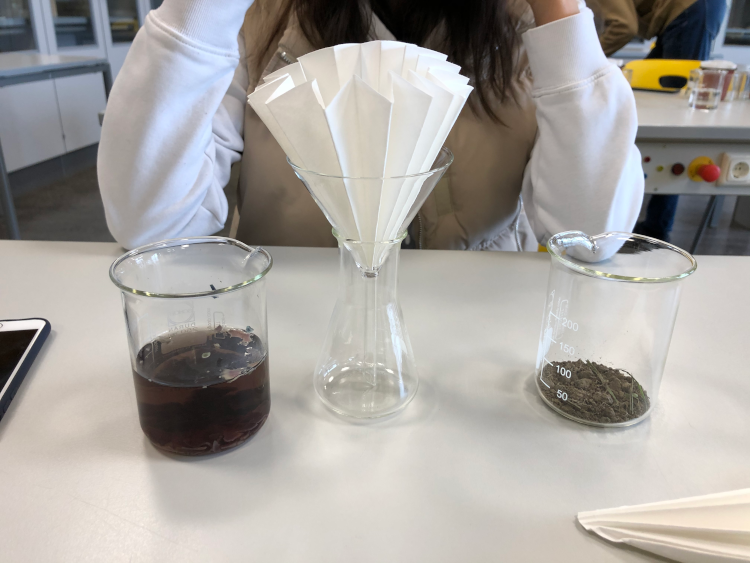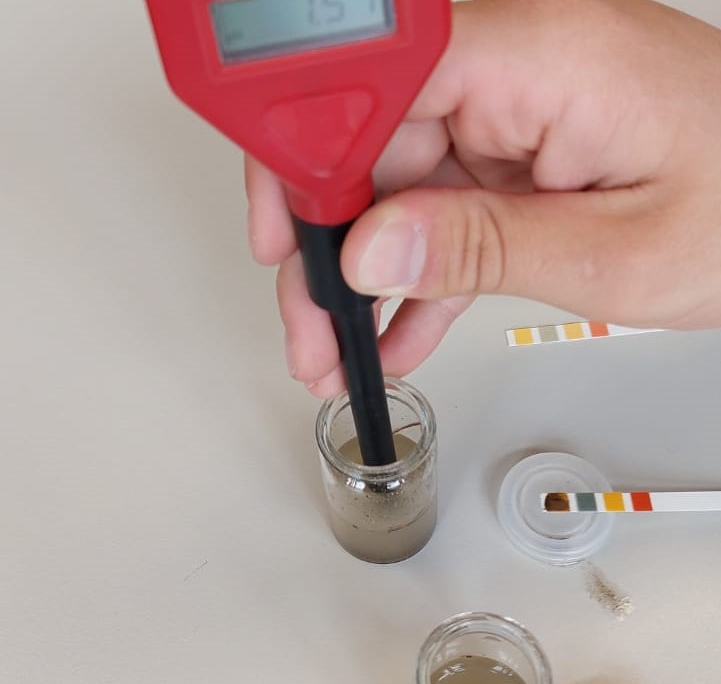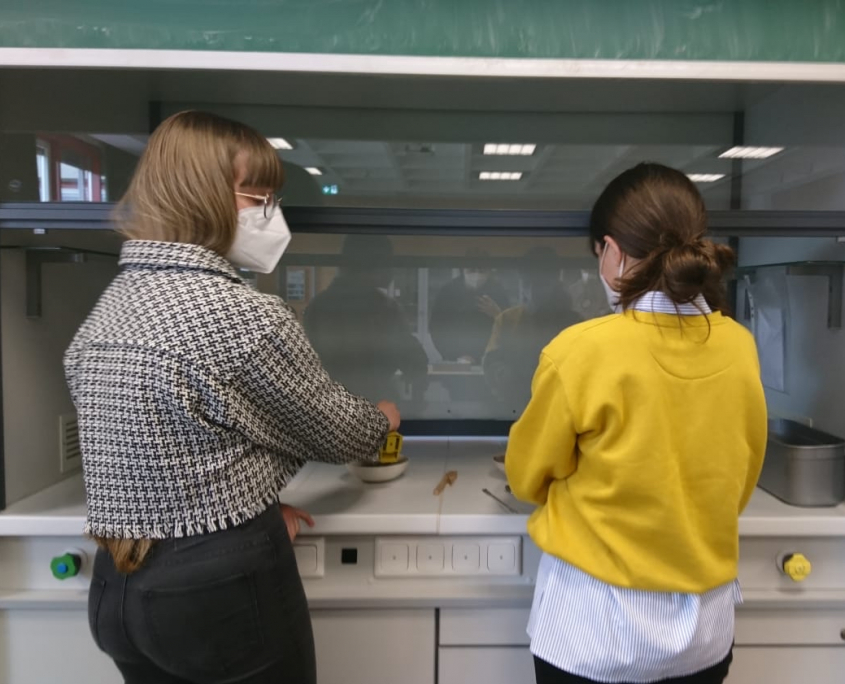Teilnahme am VCÖ-Projektwettbewerb zum Thema „Mit Chemie zu Kreislaufwirtschaft und Klimaschutz“
The students of the 2AK and their science teacher Miss Miggitsch experimented on terra preta-based soil and normal soil to find out how good terra preta is for your soil. Here’s how it went!
The first group tried to find out to which extent the four different soils could absorb water.
First, they put coffee filters in the flowerpots and filled them with different soil types. After that, they placed them in small tanks and filled the flowerpots with water. Over the span of 10 minutes, they monitored which soil absorbed the water best.
As suspected, their results showed that the terra preta-based soil absorbed the most water, while the one without terra preta absorbed little to no water.
The second group used the water and soil mixture from the first group to determine what kind of filter effect it had.
In order to do that, they prepared a colour and water mixture which would later be poured over the different soil types. This way, they could identify which soil filtered the colour best and worst. In the end, the terra preta soil performed the best.
The third group’s experiment was about finding out the pH-value of each soil type. For this they mixed distilled water with the different soil types and poured the mixture in small vials. After waiting for quite a while, the mixture was ready to be measured by a pH-value measuring instrument and it turned out that the terra preta soils scored best.
The fourth and last group carbonized the soil with a Bunsen burner. While sticking to the safety rules, the group carbonized the soil for 5 minutes. In the end, the weight of the soil minimised by 1-2 grams.
Jasmin Atzl, 2AK






